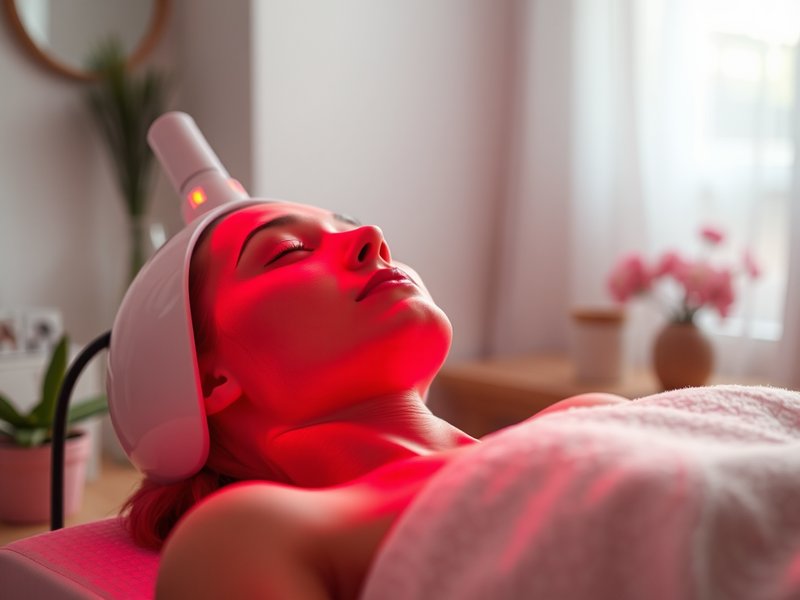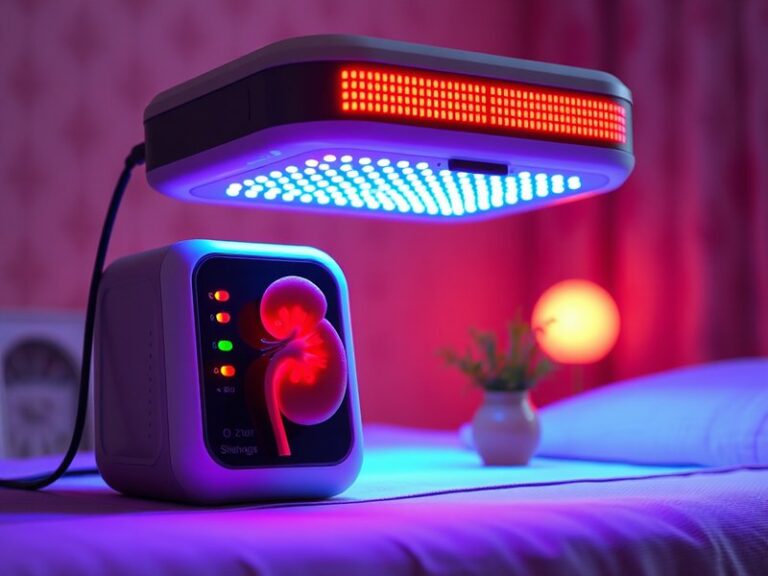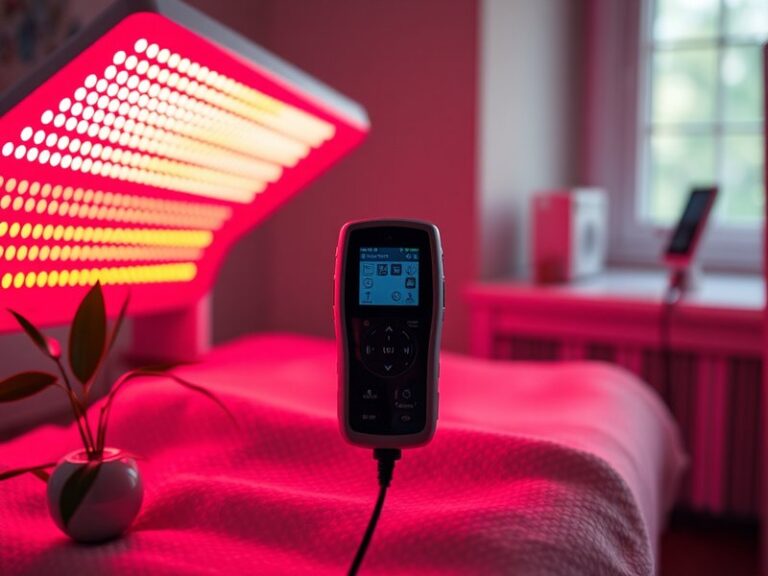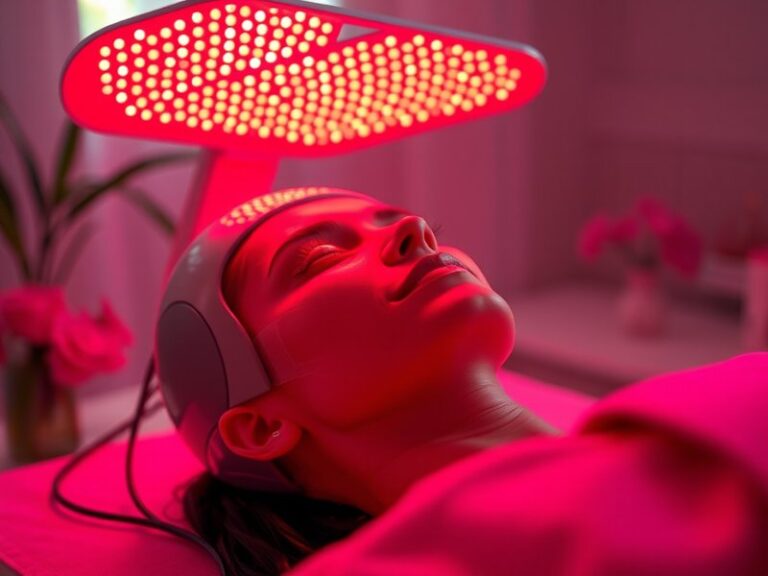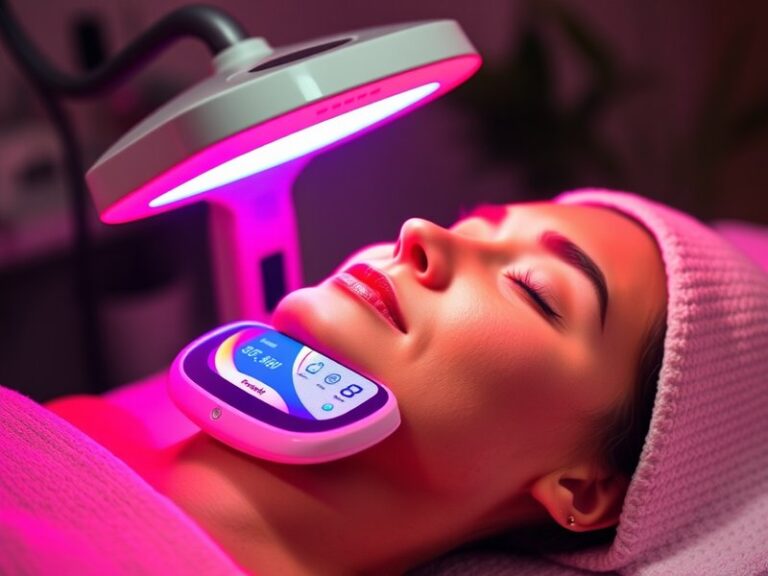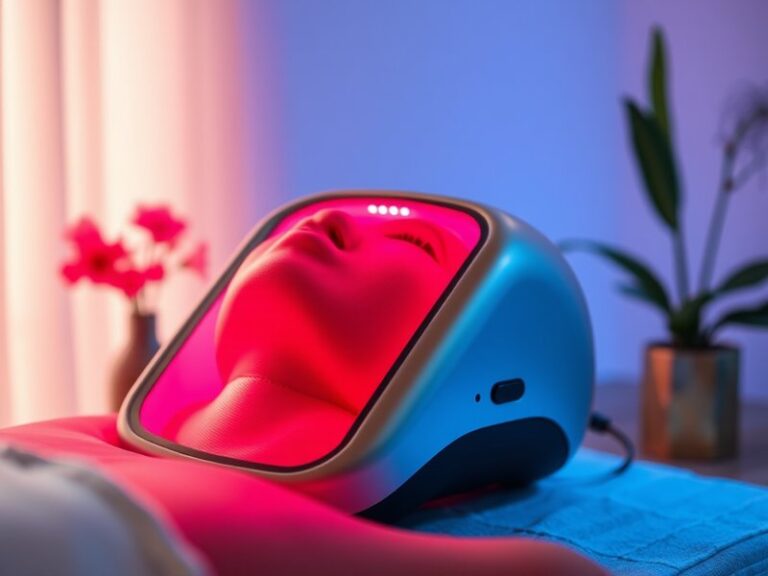Does Red Light Therapy Stimulate Collagen?
Does Red Light Therapy Stimulate Collagen?
Are you looking for non-invasive ways to improve your skin’s appearance? Red light therapy (RLT) has emerged as a popular treatment. But does it really stimulate collagen production?
This article will explore the mechanisms behind red light therapy, its benefits, and relevant considerations before incorporating it into your skincare routine. Additionally, we’ll discuss alternatives and address common questions surrounding this innovative treatment.
Key Takeaways
- Red light therapy is known to enhance collagen production, promoting healthier and more youthful skin.
- The treatment is non-invasive, making it an appealing option for those seeking aesthetic improvements without surgery.
- Various devices and methods are available, but it’s essential to consider individual skin types and conditions before use.
What is Red Light Therapy?
Red light therapy is a treatment that uses low-level wavelengths of red light to penetrate the skin and promote healing and rejuvenation at the cellular level. This therapy is also referred to as low-level laser therapy (LLLT) or photobiomodulation.
The idea behind red light therapy is based on the principle that specific wavelengths can stimulate cellular processes. In the case of RLT, red light—typically in the range of 600 to 900 nanometers—can reach deeper layers of the skin, affecting collagen synthesis and reducing inflammation.
Research indicates that this stimulation prompts fibroblasts—cells responsible for producing collagen—to ramp up their activity, potentially resulting in improved skin elasticity and overall texture.
What are the Benefits of Red Light Therapy?
Incorporating red light therapy into your skincare routine provides several potential benefits. Below are some of the most prominent advantages.
Collagen Stimulation
One of the primary benefits is its ability to stimulate collagen production. Collagen is crucial for maintaining skin structure, firmness, and elasticity. Enhanced collagen can lead to reduced signs of aging, such as fine lines and wrinkles.
Skin Regeneration
Red light therapy can accelerate skin healing processes, making it a suitable option for treating acne scars, surgical wounds, and other skin injuries. The improved circulation and increased cell metabolism from the therapy support skin regeneration.
Reduction of Inflammation
RLT has anti-inflammatory properties that can help alleviate conditions like rosacea, psoriasis, and other inflammatory skin conditions. By reducing inflammation, the therapy may provide relief from symptoms and promote overall skin health.
Pain Relief and Muscle Recovery
While primarily focused on skin health, red light therapy has also shown promise in alleviating pain and accelerating muscle recovery. Athletes and those with chronic pain may find it beneficial for enhancing their recovery processes.
Is it Possible to Stimulate Collagen with Red Light Therapy?
Yes, red light therapy can effectively stimulate collagen production in the skin. The treatment works by penetrating the skin and activating the fibroblasts, leading to enhanced collagen synthesis. However, individual results can vary based on several factors.
What are the Advantages of Stimulating Collagen with RLT?
Increased collagen production can lead to numerous advantages for your skin and overall well-being.
Non-Invasive Treatment
Unlike surgical procedures, RLT is non-invasive and typically involves no downtime. Patients can resume daily activities immediately after treatment.
Improved Skin Quality
As collagen levels rise, the skin develops improved firmness and elasticity, leading to a more youthful appearance.
Customizable Treatments
Various devices are available for at-home use, in spas, or medical facilities, making RLT accessible to a wide audience. Tailored treatments can target specific areas for optimal results.
What are the Things to Consider Before Trying Red Light Therapy?
While red light therapy can be effective, certain considerations should be taken into account before starting treatment.
Skin Type and Sensitivity
Individuals have different skin types, and sensitivity levels should be evaluated before undergoing RLT. Consulting with a dermatologist can provide insights on suitability.
Consistency and Frequency of Treatments
For optimal results, consistency is key. Treatments should typically be repeated several times a week over a period of weeks or months. Understanding the commitment level required is crucial.
Potential Interactions with Other Treatments
If you are undergoing other skin treatments or using specific medications, it’s important to discuss these with your healthcare provider, as interactions or sensitivities may arise.
What are the Alternatives to Red Light Therapy?
If red light therapy doesn’t seem like the right fit for you, or if you’re seeking additional options, consider the following alternatives for collagen stimulation.
Microneedling
Microneedling involves tiny needles creating micro-injuries in the skin, prompting the body to regenerate collagen and elastin. This treatment can improve skin texture and reduce the appearance of scars.
Laser Treatments
Similar to RLT, laser treatments (like fractional CO2 lasers) can encourage collagen production by targeting deeper layers of the skin. These options often provide significant results but may come with more downtime.
Chemical Peels
Chemical peels exfoliate the outer layers of the skin, promoting cellular turnover and stimulating collagen synthesis. Different formulations are available, suited for various skin types.
Conclusion: Is it Recommended to Use Red Light Therapy for Collagen Stimulation?
Red light therapy presents a promising option for those looking to stimulate collagen production and improve skin health non-invasively. With numerous benefits, including enhanced skin elasticity and reduced inflammation, RLT can be an effective addition to your skincare routine. However, it is crucial to consider personal skin types, potential interactions with other treatments, and the commitment required for consistent results.
Frequently Asked Questions
How long does it take to see results from red light therapy?
Results can vary, but many individuals may start seeing improvements within a few weeks of consistent treatments. Long-term benefits usually become more apparent with continued use.
See what we think about Pre-Red Light Therapy Face Prep
For an in-depth look, see Advantages of Red Light Therapy
Are there any side effects of red light therapy?
Generally, red light therapy is considered safe with minimal side effects. Some individuals may experience temporary redness or sensitivity post-treatment.
Can anyone use red light therapy?
While suitable for many, individuals with certain conditions or skin sensitivities should consult a healthcare provider to ensure RLT is safe for them.
How often should I undergo red light therapy for the best results?
For optimal results, treatments are often recommended 2-3 times a week. Always follow the guidance of a professional or the device’s instructions for best practices.
Is red light therapy safe for all skin types?
RLT is typically safe for all skin types. However, those with specific conditions or sensitivities should consult a dermatologist before starting treatments.
